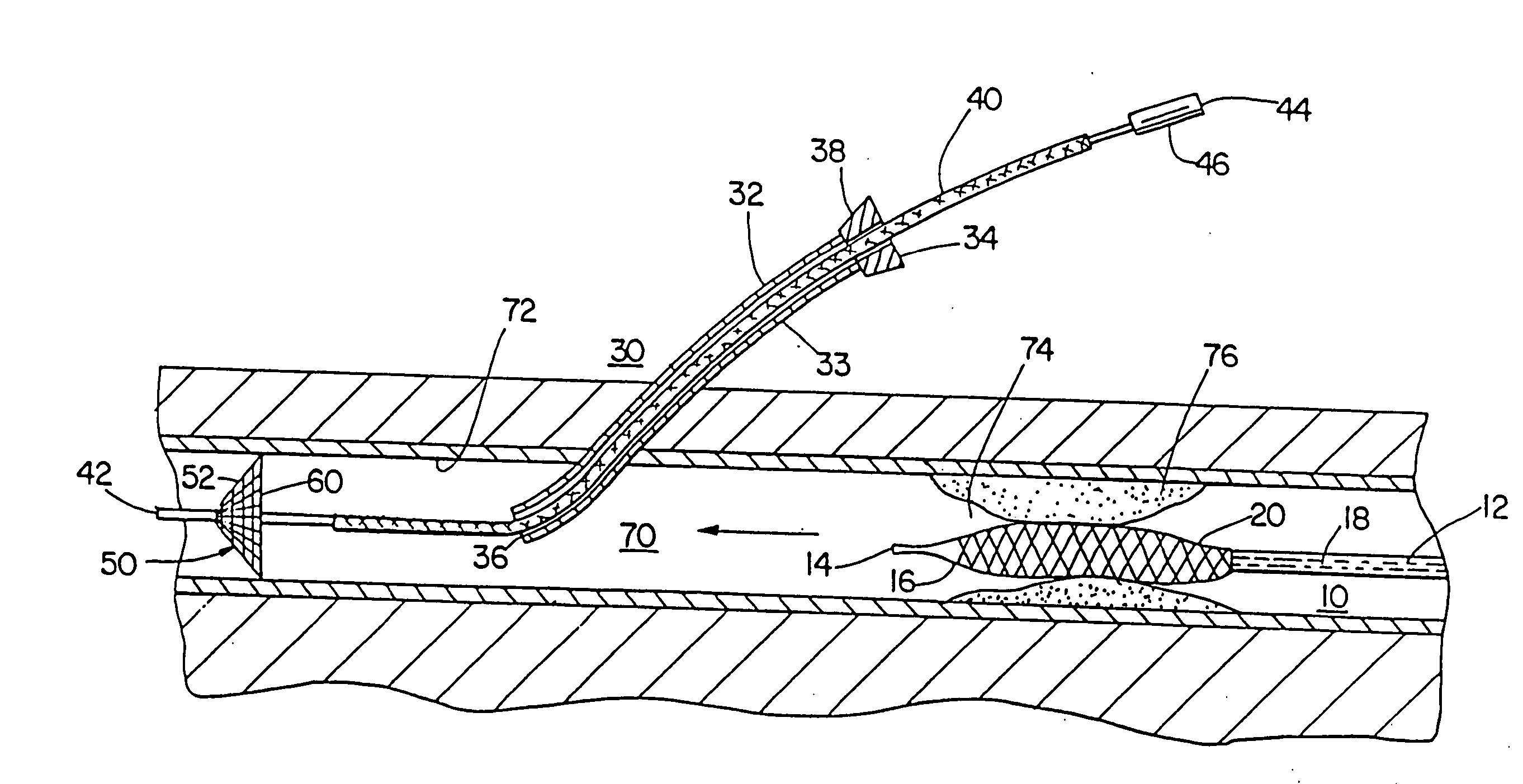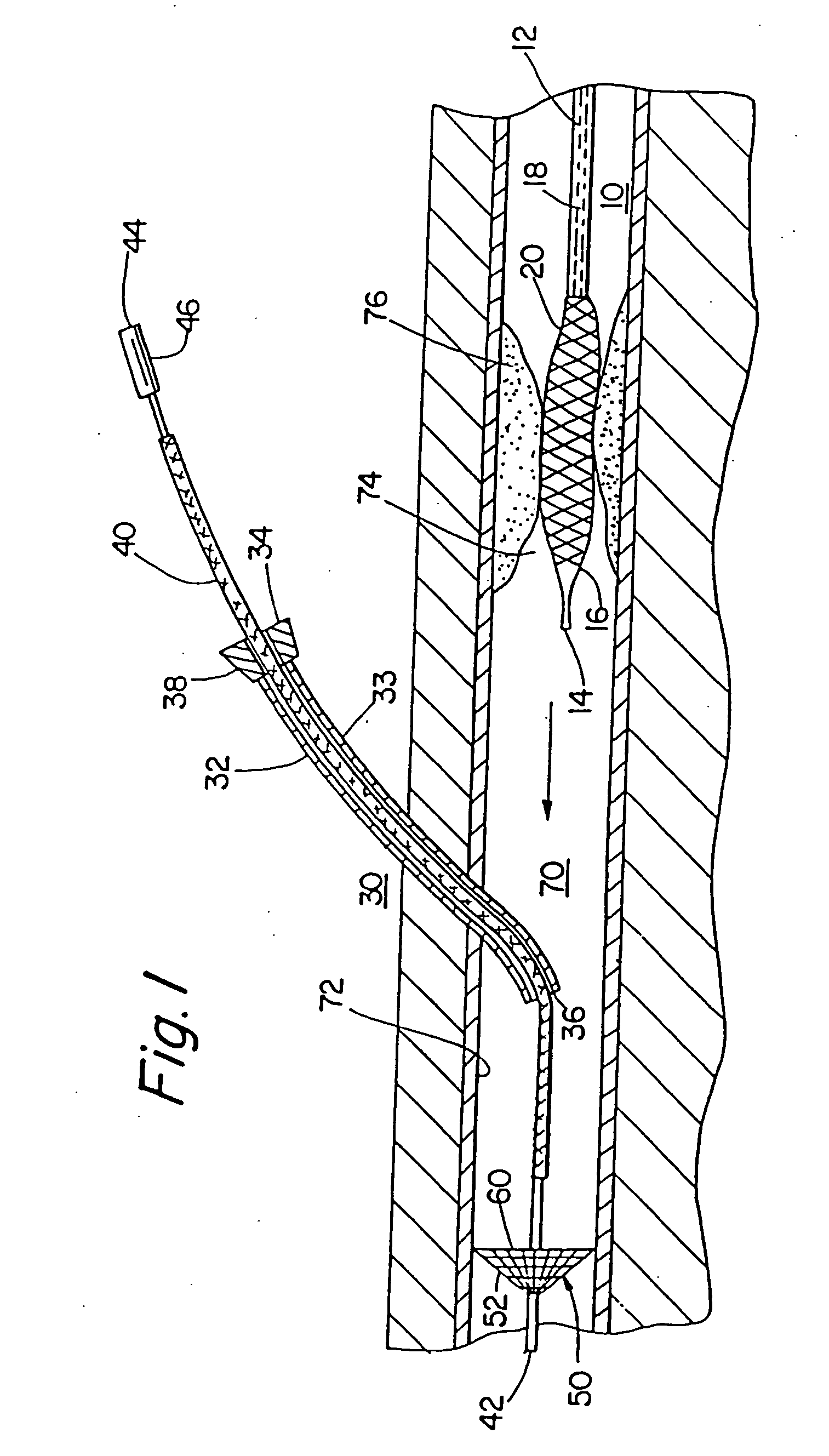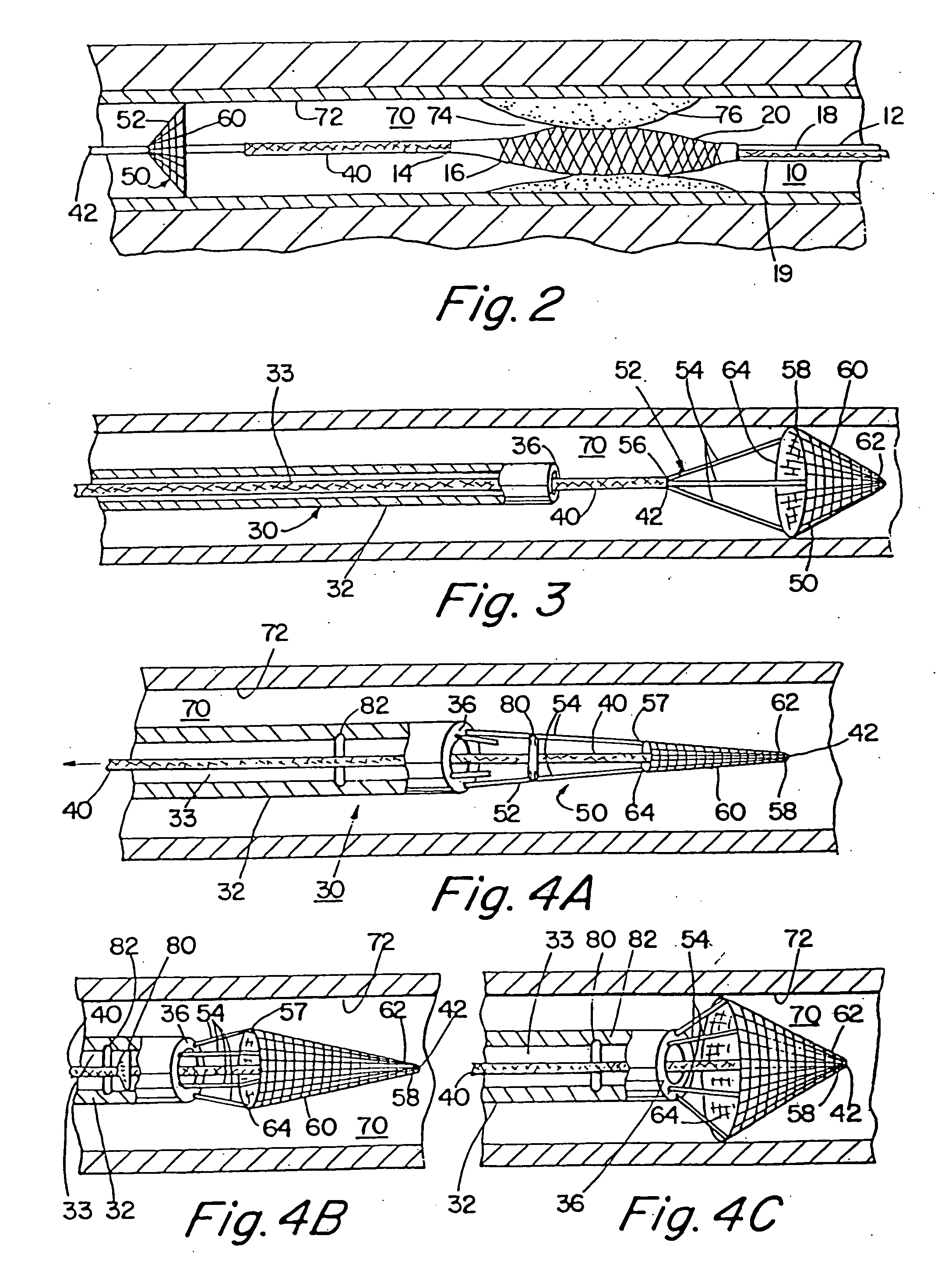Methods of protecting a patient from embolization during surgery
a technology of embolism and surgery, applied in the field of treating plaque deposits and occlusions, can solve the problems of permanent injury or even death of patients, damage to patients, serious complications,
- Summary
- Abstract
- Description
- Claims
- Application Information
AI Technical Summary
Benefits of technology
Problems solved by technology
Method used
Image
Examples
Embodiment Construction
[0062] Turning to FIG. 1, a first embodiment of the present invention is shown, namely a stent catheter 10 and a filter device 30. The stent catheter 10 typically includes a catheter body 12, an inflatable balloon 16, and a stent 20. The catheter body 12 typically comprises a substantially flexible member having a proximal end (not shown) and a distal end 14. The balloon is mounted on a region at or near the distal end 14 of the catheter body 12. An inflation lumen 18 extends longitudinally from a region at or near the proximal end of the catheter body 12 to the balloon 16.
[0063] The stent 20 is introduced over the balloon 16, typically by manually compressing it onto the balloon 16. The stent 20 may comprise a tube, sheet, wire, mesh or spring, although preferably, it is a substantially cylindrical wire mesh sleeve, that is substantially rigid, yet expandable when subjected to radial pressure. Many known stent devices are appropriate for use with the present invention, such as tho...
PUM
 Login to View More
Login to View More Abstract
Description
Claims
Application Information
 Login to View More
Login to View More - R&D
- Intellectual Property
- Life Sciences
- Materials
- Tech Scout
- Unparalleled Data Quality
- Higher Quality Content
- 60% Fewer Hallucinations
Browse by: Latest US Patents, China's latest patents, Technical Efficacy Thesaurus, Application Domain, Technology Topic, Popular Technical Reports.
© 2025 PatSnap. All rights reserved.Legal|Privacy policy|Modern Slavery Act Transparency Statement|Sitemap|About US| Contact US: help@patsnap.com



